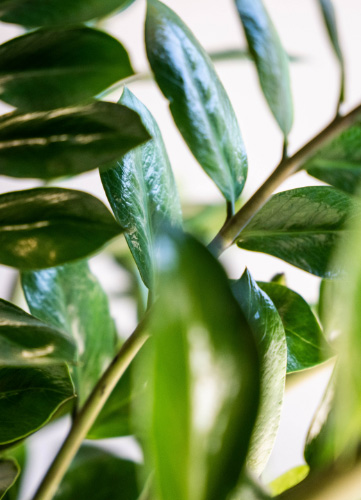Excessive exposure
Scalp hair normally serves various physiologic roles that include protection against excessive exposure to ultraviolet radiation and cold temperatures, as well as defining an individual’s social, sexual, and health well-being. Hair production has its own unique cycle and characteristics.


Hair demographics
It is determined that an individual has between 2-5 million of hair follicles of which 100,000-150,000 are located in the scalp. The number of scalp hair follicles varies on the one’s ethnicity, hair color, and age, ranging from 130,000 in blond Caucasians to 90,000 in red Caucasians, Asians and African Americans. An average density of scalp hairs in Caucasian males is 200 hairs/cm2 of scalp area, Latin males 170 hairs/cm2, Asian males 160 hairs/cm2, and African American males 100 hairs/cm2 of scalp. The number of hair follicles does not differ between sexes.
Hair types
There are 4 types of hair, which are different in length, shaft thickness, and depth of bulb location (hair root): lanugo hair (the finest), vellus hair, Intermediate hair, terminal hair (the deepest, longest, and thickest). The terminal hair is pigmented. This is the hair mostly seen on normal scalp.
Normal Hair Cycling
Normal hair undergoes complete loss and regeneration through main three stages: anagen, the growth phase that lasts 2-6 years, catagen, the brief shrinking phase (3-4 weeks), and telogen, the hair miniaturization and loss (3-4 months). Some authors also recognize the fourth stage, exogen when the hair becomes completely retouched from the surrounding skin. After completion of telogen, the progression of hair cycle resumes and new hair cycle starts thanks to the reservoir of long-term stem cells located near the base of the hair stem. In healthy individuals, over 80% of hair is in anagen phase (80-85% in males and 85-90% in females).
– Ewa Timek, MD


Hair Loss
AT ADVANCED PLASTIC SURGERY
Hair loss affect 50% males and females in the course of their lifetimes. Androgenic Alopecia (AGA), particularly of Male Pattern, is the most common form of baldness. It can occur in adolescence leading to progressive, patterned, non-scarring loss of scalp hair of 30% by age of 30, at least 50% by the age of 50, and up to 70% in lateral life. This type of hair loss is thought to be male hormone dependent. As the studies have shown, hair follicles in males and females suffering from AGA contain high levels of an enzyme 5α-reductase type II converting of testosterone to dihydro-testosterone (DHT), the product directly responsible for hair miniaturization and loss.

Other causes of hair loss
Stress
In the face of everyday stress, the adrenal gland produces more adrenaline, which can lead to an increase in the production of testosterone and dihydrotestosterone (DHT). If you do not have enough other hormones to counterbalance this, it can lead to hair not being as healthy as it should be.
For some people, everyday stress can affect the condition of their hair and it can turn into a vicious circle: stress affects the hair cycle and the impact of this can cause more stress for the individual.
Poor diet
A diet rich in protein, vitamins and minerals is essential for healthy hair and hair growth. The hair follicle is a nonessential tissue and, therefore, one of the last tissues to receive nutritional substances. Therefore, any long-term deficiencies may lead to premature hair loss.
Protein
Eat at least five ounces (approximately 150 grams) of protein a day. Foods high in protein are meat, chicken, fish, beans, eggs, cheese and tofu. Because hair is made of 80% to 95% protein, this is an important area of your diet.
Iron
Iron deficiency can contribute to hair loss, especially in women and men who may lack adequate protein in their diets.
Other minerals
Other important minerals for healthy hair functioning are zinc (found in seafood and beans), silica (found in potatoes, red and green peppers, and bean sprouts), magnesium (found in green vegetables and nuts), and essential fatty acids (such as the omega fatty acids found in fish).
Over styling
Excessive use of aerosol sprays, hair dyes, hair irons or curlers may result in damaged hair in the long term. Men and women who find their healthy hair is being affected may want to reconsider the products that they’re using on their hair and scalp, consider other nutritional supplements and healthier styling methods.
Smoking
Smoking can affect healthy hair growth. Cigarette smoking has been shown to cause poor circulation, which can affect the amount of blood flow available to the hair follicles of the scalp.
Hair loss in women
Hormonal changes
Hormonal changes associated with menopause can affect the healthy hair growth cycle. While this menopausal side effect is relatively rare, it has been known to occur in some cases. Other hormonal changes in the body have been known to affect hair thinning and loss in some women. Women can experience problems with their hair due to a hormone imbalance and increased sensitivity to the male hormones found naturally in women’s bodies.
Post pregnancy
Pregnancy, while a beautiful and natural process, can be a stressful event for a woman’s body. Consequently, it’s common for women to experience hair thinning or even bald patches post-partum as their hormone levels normalize. However, this is usually a temporary condition and should reverse itself in time. Please note, we do not recommend that women take Viviscal hair vitamins, during pregnancy or breastfeeding.
Birth control
The Pill is the most common form of contraception for women. It contains a mixture of progestin and estrogen, which occasionally can affect healthy hair growth in those who have a hereditary history of hair loss.

AVERAGE COST
how much does hair restoration cost in grand rapids?
The cost of hair restoration in Grand Rapids is determined by various factors. After you meet with Dr. Timek and she creates your treatment plan, our Patient Coordinator will be able to provide you with a price breakdown.
What is Normal Shedding?
You may be asking how many hairs is normal to shed per day. The body sheds around 100 hairs per day as a part of normal daily hair loss, with no visible effects on hair thickness. But if you regularly lose more hair than this in your hairbrush or the shower drain, you might be asking yourself, why is my hair shedding? If your hair is shedding more than usual, you could be suffering from excessive hair shedding. Hair shedding is typically a temporary condition associated with a particularly stressful life event, or it can be caused by hormonal changes, over-styling or nutritional deficiencies.
In contrast, hair loss, or anagen effluvium, happens when something stops hair from growing. Hair will not regrow until the cause of the condition is addressed. The most common causes of hair loss include hereditary hair loss, immune system overreaction, and certain drugs and treatments. Patients who undergo chemotherapy or other radiation treatments, for example, tend to lose a lot of hair. Their hair, however, usually regrows once the treatment has stopped.
In contrast, women who inherit the genes for hereditary hair loss may need medical treatment to regrow their hair. For women, hereditary hair loss typically manifests itself in the form of gradual thinning. Finally, tight hairstyles or braids that pull on the hair, or damaging products and hair color, can cause temporary hair loss.
Causes Of Excessive Hair Shedding
What is extreme hair shedding and what causes hair shedding? It’s normal to shed around 100 or so hairs a day. These are the hairs you find in your shower, on your carpet and on the shoulder of your jacket. Most of the time, you won’t even realize that you are shedding these hairs.
If your body has increased hair shedding on a daily basis, you may have excessive hair shedding. There are many hair shedding causes, but a little-known fact is that curly hair is more likely to shed than thin hair. This is often because those with curly hair use more styling products and hot tools to manage their hair.
Known as telogen effluvium, excessive hair shedding is a temporary condition and typically affects those exposed to one or more physical or emotional stressors. Examples include people who are experiencing a difficult or traumatic life event, those who have lost 20 pounds or more, women who have recently given birth, women who have undergone an operation or are recovering from an illness, or women who have switched or stopped birth control pills. Often, the excessive shedding will not become apparent until a few months after the stressful event due to the hair growth cycle.
Does hair shedding stop on its own? Excessive shedding may stop when the body readjusts after the stressful event. Then, hair usually regains its previous fullness. People who are constantly under a lot of stress, however, may experience term excessive hair shedding.
Often, experts point to improper nutrition and lack of vitamins as a reason for hair shedding. Lack of proper nutrients, particularly insufficient protein, iron and essential fatty acids, can cause changes to the normal hair cycle, pushing roots prematurely up and causing them to fall out. The body requires a variety of nutrients in order to maintain hair health and growth.
Hair shedding caused by improper nutrition is easily remedied. Replenishing vital B vitamins and proteins likely will significantly improve hair health. Improper nutrition is one of the leading hair shedding causes. Those who cannot easily consume all necessary nutrients in their diets should consider taking clinically proven hair growth supplements that are specially formulated for women’s hair loss.
How to stop Hair Shedding?
If you’re now asking how to stop my hair from shedding, don’t panic! While constant hair shedding is worrisome, there are many different hair shedding treatments available. When choosing how to stop hair breakage and shedding, first you should stop actively damaging your hair. Heat damage from blow-dryers, curling irons and flat irons, as well as hair color, bleach and hair extensions are very common causes of female hair shedding.
Another way to reduce hair shedding is to identify and eliminate sources of physical or mental stress. Stop excessive hair shedding by getting rid of stress and putting yourself into a healthy physical and mental state. If you cannot stop the source of stress itself, try to change your reaction to it by adding de-stressing activities to your lifestyle, such as meditation, yoga, cardiovascular exercise or writing in a journal.
One of the best secrets to hair growth, thickness and shine lies within the body. If you provide your body with the nutrients it needs, it will grow thicker hair on its own. On the other hand, poor nutrition weakens hair and prematurely pushes out growing hairs, resulting in thinning, dull or shedding hair. Key nutrients for hair include proteins, Iron, Zinc, Vitamin C and B Vitamins. Take a daily hair multivitamin that contains all these nutrients in order to reduce hair shedding.

Become a Patient
contact us
If you find yourself in the Grand Rapids area and feel like hair restoration is right for you, you should give us a call at (616) 323-3102. You can also request an appointment through our website and one of our friendly and helpful team members will be in touch with you.
Patient Resources
Advanced Plastic Surgery
We’re here to help, with a number of patient resources designed to make your experience as comfortable as possible. Read through the materials below, and don’t hesitate to reach out.

